Nonprofit Fundraising Letter Template for Successful Campaigns
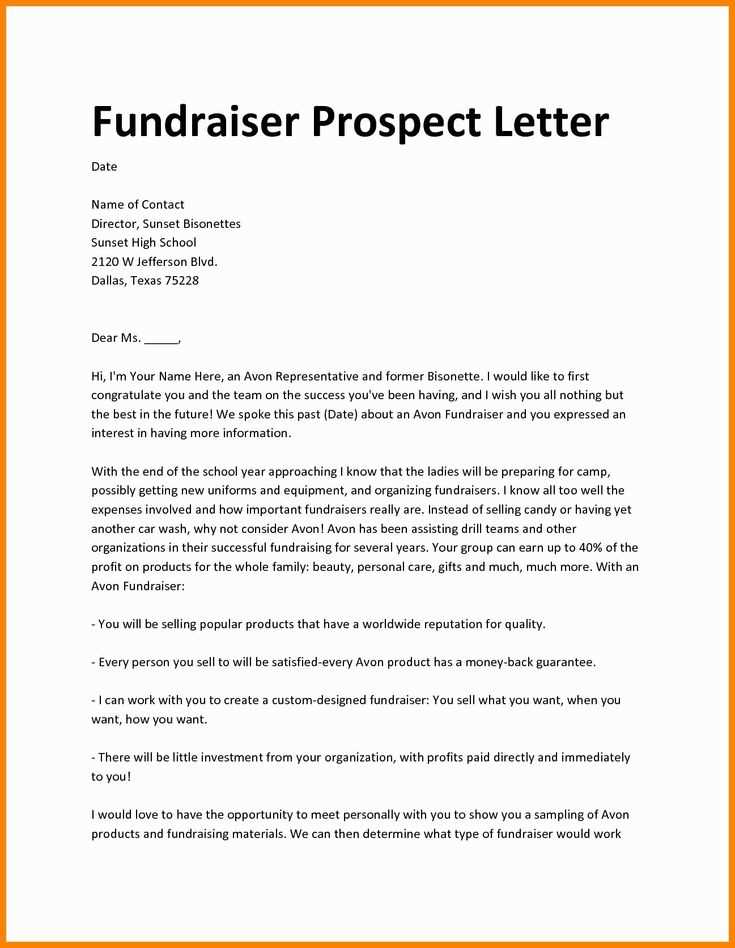
When it comes to securing financial support for your cause, crafting a compelling communication is key. The right approach can inspire individuals to contribute, while a poorly written message might fail to resonate. In this section, we explore how to build an engaging and persuasive appeal that encourages generosity and fosters long-term relationships with supporters.
Understanding your audience is essential when crafting a message. Tailoring your content to reflect the values and interests of your readers can make a significant difference. By connecting emotionally, you can create a sense of urgency and purpose that moves people to take action.
Clear structure also plays a pivotal role. A well-organized and easy-to-follow approach ensures that your appeal is both accessible and effective. Proper formatting and a focus on key details will help guide the reader toward the desired response without overwhelming them with unnecessary information.
Crafting an Impactful Fundraising Letter
Creating a compelling message that resonates with your audience is crucial for encouraging support and action. It’s about more than just asking for help–it’s about forging a genuine connection and showing why your cause matters. The way you convey your mission, the emotions you evoke, and the clarity of your call to action will determine the response you receive.
Start with a Personal Touch
Make your appeal feel personal. Instead of using generic language, address the recipient directly, whether through their name or by acknowledging their previous support. People are more likely to respond positively when they feel that their involvement is valued and appreciated.
Tell a Story
Stories are powerful tools that can capture attention and stir emotions. Share real-life examples that illustrate the impact of your work. Describe the challenges, triumphs, and people whose lives have been changed through their contributions. This narrative helps potential donors visualize their own role in making a difference.
Highlight the Urgency
Be clear about why the timing matters. People are more inclined to act when they feel there’s a pressing need. Use language that conveys urgency but also hope, ensuring that the potential for positive change is within reach. Explain how their support can lead to tangible outcomes in a short timeframe.
Make the Ask Clear and Easy
Don’t leave room for confusion when it comes to how supporters can contribute. Provide clear instructions on how they can give, whether it’s online, via check, or another method. The easier you make it, the more likely people will take immediate action.
End with Gratitude
Always thank your audience, regardless of whether they choose to contribute. Gratitude fosters a sense of connection and reinforces the idea that their involvement is truly appreciated. A heartfelt acknowledgment can encourage future support and foster long-lasting relationships.
Key Elements of a Persuasive Appeal
Creating an effective request involves several key components that work together to inspire action and support. These elements ensure the message resonates emotionally and intellectually, motivating the reader to contribute. Each part of the communication should be crafted with care to maximize its impact.
Emotional Connection
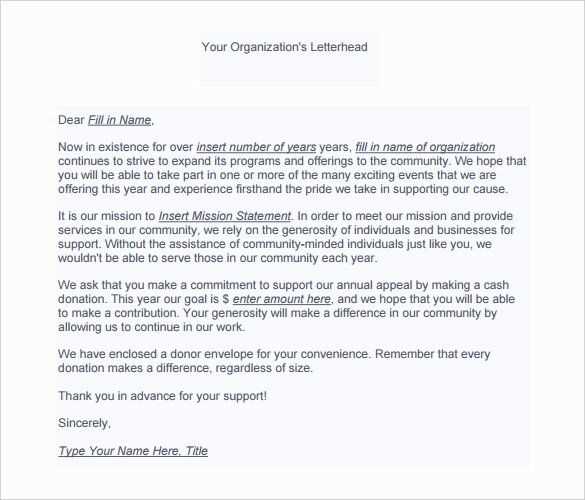
Engage the heart by sharing personal stories or examples that highlight the human aspect of your cause. When people connect emotionally, they are more likely to be moved to help. This connection can be created through vivid descriptions of the challenges faced by those in need and the transformative power of support.
Clear and Compelling Call to Action
The purpose of the communication is to prompt action. Make your request direct and specific, outlining exactly what you need and how it will make a difference. Whether it’s a monetary donation or volunteering time, your audience should understand the steps they can take immediately. A strong, clear call to action ensures that the message doesn’t just resonate–it drives the desired response.
Appealing to Values
Appeal to your audience’s values and beliefs. Show how supporting the cause aligns with their own principles. When people see that their contributions will further a mission they believe in, they are more likely to act. This sense of shared purpose makes the cause feel more relevant and important to them.
Personalizing Your Message for Donors
Creating a message that speaks directly to your audience is essential for building trust and encouraging support. Personalization makes your appeal feel more meaningful, showing that you value the individual’s past contributions and see them as an integral part of the cause. Tailoring your communication ensures it resonates more deeply and inspires action.
Address the Individual Directly
Use the recipient’s name throughout your message to create a sense of connection. A personalized greeting shows that you’re not sending a generic request but reaching out to them specifically. This small detail can have a big impact on how the message is received and can make the donor feel more valued.
Recognize Past Support
Highlight any previous involvement or contributions they’ve made. Acknowledge their past generosity and explain how it has helped further the mission. By reminding them of their previous impact, you reinforce the idea that their support truly matters and that they are a key part of the effort.
Tailor the Appeal to Their Interests
If possible, align your message with the donor’s specific interests or history of support. If they have previously contributed to a particular project or initiative, emphasize how their donation will make a continued difference in that area. This personalized approach helps show that you understand what drives their giving and how their involvement is making a lasting impact.
Using Emotional Language to Connect
The way you communicate the urgency and importance of your cause plays a significant role in motivating others to take action. By using language that evokes feelings, you can create a strong emotional bond with your audience, making them feel invested in the success of your mission. When people connect emotionally, they are more likely to offer their support.
Appeal to Compassion
Draw on your audience’s sense of empathy. Use words that highlight the struggles of those in need and the difference their support can make. Describing real-life challenges in a compassionate way can inspire feelings of solidarity and a desire to help.
Highlight the Positive Impact
While it’s important to address challenges, it’s equally essential to emphasize hope and the potential for positive change. Use uplifting language that shows how contributions can transform lives, creating a brighter future for individuals and communities. This optimism fosters a sense of possibility and empowers supporters to feel part of something bigger.
Engage the Heart
When crafting your message, focus on creating a deep connection by using vivid, heartfelt language. Whether you’re sharing success stories or illustrating the need for help, the emotional impact of your words will resonate long after your audience has finished reading.
How to Structure Your Fundraising Request
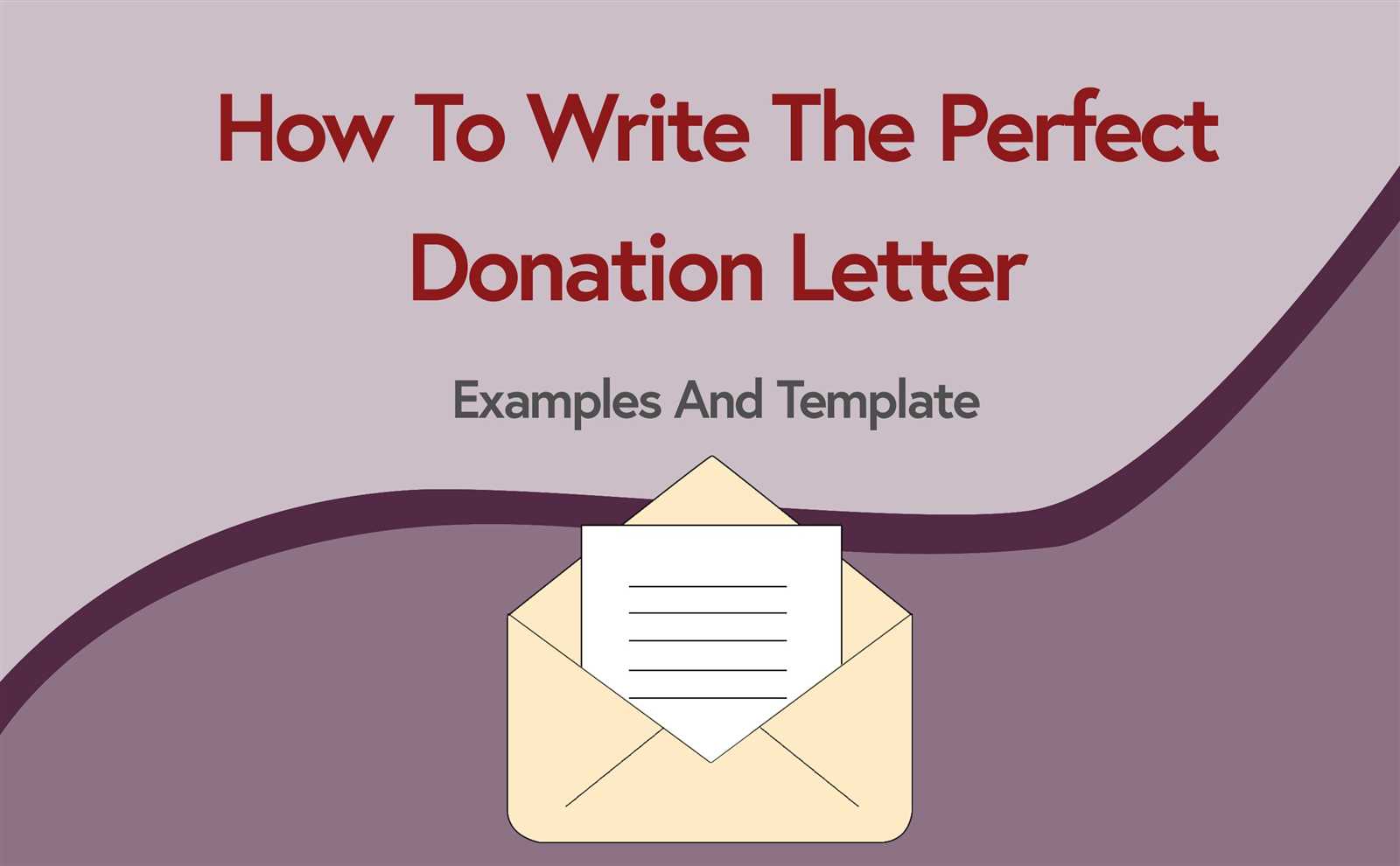
Creating a well-organized appeal ensures your message is clear, compelling, and easy to follow. The structure of your request can greatly influence how effectively it communicates the need and motivates action. A thoughtful layout helps break down the information into digestible sections, guiding the reader step by step toward understanding the cause and how they can contribute.
| Section | Description |
|---|---|
| Introduction | Begin by establishing a connection with your audience, making it personal and relevant. Briefly explain why you are reaching out and what you hope to achieve. |
| The Need | Clearly describe the issue or challenge you are addressing. Explain why the cause is urgent and how it impacts the community or individuals involved. |
| The Solution | Outline the actions you’re taking to address the issue and how the contributions will directly help. Provide specifics on what donations or support will accomplish. |
| Call to Action | Make your request clear. Tell the reader exactly what you are asking for and how they can help. Include simple instructions on how they can contribute or get involved. |
| Conclusion | End with a strong closing, expressing gratitude and emphasizing the impact of their support. Make them feel appreciated and part of the effort. |
By following this structure, your message will be easy to digest and will lead the reader through a logical progression of understanding the need, the solution, and how they can contribute.
Design Tips for a Professional Look
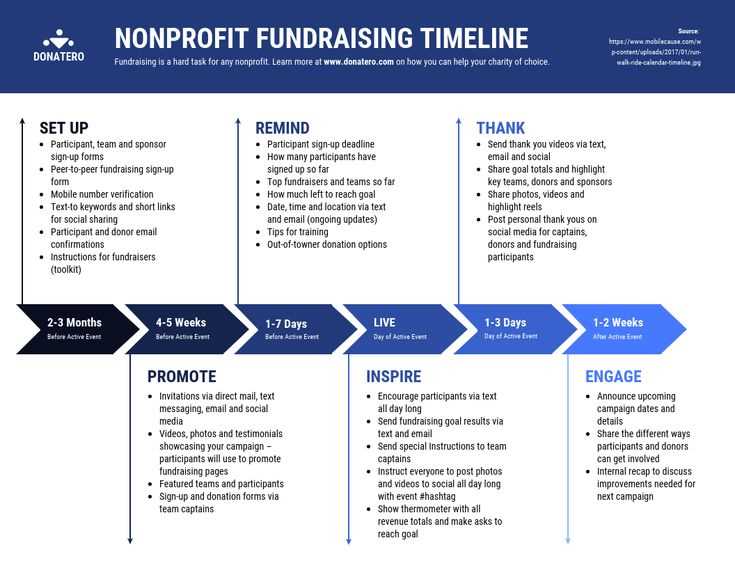
The visual appearance of your communication plays a crucial role in its effectiveness. A clean, professional design not only makes the message more appealing but also reinforces the credibility of your cause. Attention to detail in layout, typography, and imagery can help create a lasting impression and encourage positive action.
Layout and Structure
- Use a clear, organized layout: A well-structured design helps guide the reader through the content, making it easier to understand the key points and take action.
- Keep it balanced: Avoid clutter. Ensure there is enough white space between text and images to allow for easy reading and a visually pleasing experience.
- Use headings and subheadings: Break the content into sections with clear headings, allowing the reader to quickly navigate the message.
Typography and Fonts
- Choose legible fonts: Use simple, professional fonts that are easy to read on both desktop and mobile devices. Avoid overly decorative or hard-to-read typefaces.
- Limit font styles: Stick to one or two font styles throughout your design. Too many fonts can make the design look chaotic and unprofessional.
- Emphasize key points: Use bold or italicized text to highlight important information, but do so sparingly to avoid overwhelming the reader.
Color and Imagery
- Choose a simple color palette: Use a limited number of colors that complement each other and align with your branding or mission. Avoid using too many bright or contrasting colors that may distract from the message.
- Incorporate high-quality images: If you use photos or graphics, make sure they are high resolution and relevant to the message. Avoid overloading the design with too many images.
By following these design principles, your message will not only look more polished and professional but will also engage the reader in a way that encourages them to take the next step in supporting your cause.
Best Practices for Sending Your Appeal
Once your message is ready, how and when you send it plays a crucial role in its effectiveness. Timing, delivery method, and personalization all contribute to how well your request is received. Implementing best practices for distribution ensures your appeal reaches the right audience and maximizes the chances of a positive response.
Timing and Frequency
- Choose the right time: Send your communication when recipients are most likely to engage. Avoid periods when they may be overwhelmed with other messages, like holidays or the end of the month.
- Follow up strategically: If you don’t receive an immediate response, a gentle reminder can help keep your message top of mind. However, don’t overdo it–ensure the timing is appropriate and spaced out to avoid overwhelming your audience.
Delivery Method
- Email: This is an efficient method for reaching a large number of people. Make sure your email is well-structured, includes a clear subject line, and is mobile-friendly.
- Physical mail: For a more personal touch, consider sending a printed version. A well-designed, high-quality printed appeal can stand out and feel more tangible, showing your commitment.
- Social media: Sharing your message across social platforms can help you reach a wider audience. Tailor your message to each platform’s format and encourage sharing to amplify your reach.
Personalization and Targeting
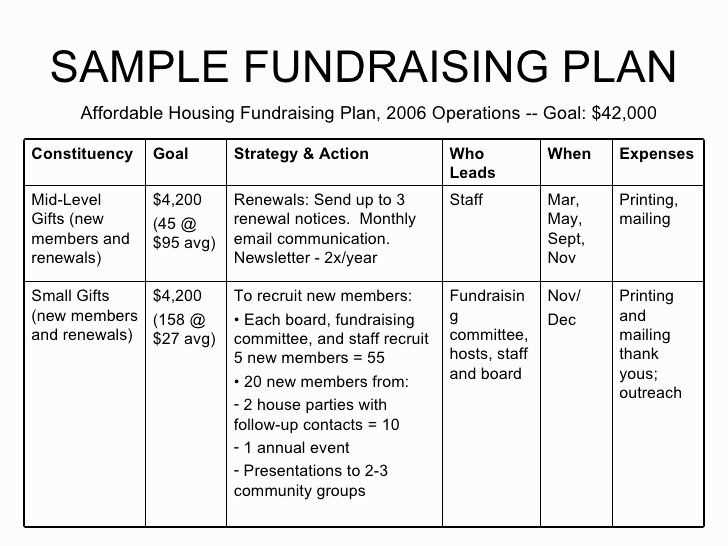
- Segment your audience: Customize your communication based on the recipient’s previous involvement or interests. This makes the appeal more relevant and increases the likelihood of engagement.
- Personalize your message: Use the recipient’s name and reference any previous interactions or contributions. This makes the appeal feel more individualized and valued.
By considering these best practices, you can ensure that your request is delivered effectively and resonates with your audience, driving the desired response.